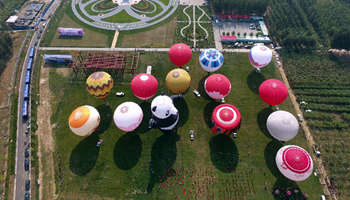GUADALAJARA, Mexico, Sept. 30 (Xinhua) -- Attaining samples from Mars has long eluded scientists due to its distance from Earth, but it could become a reality in the next decade through international cooperation, a NASA official has said.
Charles Whetsel, manager of the Mars Program Formulation Office at NASA's Jet Propulsion Laboratory, believes samples could be retrieved through a type of space relay using robots to gather them and spacecrafts to bring them to the moon, where humans could then pick them up.
An international collaboration between several countries could finally allow researchers to study the red planet for signs of life, Whetsel told Xinhua during the 67th International Astronautical Congress held in Mexico's western city of Guadalajara from Monday to Friday.
"We would like to do it by the mid-2020s. The (Mars Rover) mission we are currently working on for 2020 will collect samples we think will be good and valuable to bring to Earth," said Whetsel.
Why hasn't this been done before?
"It has a lot to do with financial considerations," said Whetsel, as the cost of the complex mission is too high for any single country to finance.
"When you travel to Mars, the most practical thing is not to return directly to earth. You have to first go into Mars' orbit and then have another spacecraft meet you in that orbit and bring the samples back," sadi Whetsel.
"We have never returned from a mission other than to the moon," he said.
The 2020 mission is expected to collect some 30 samples, weighing only a total of 500 grams, which will have to be brought back to earth for analysis, because special laboratories are needed to carry out the studies, he said.
"The idea is to acquire rock samples of the distant history of Mars, when we know it was warm, when we know there was humidity and water," he said.
The red planet's distance from earth varies, but at its closest is some 56 million kilometers away.










